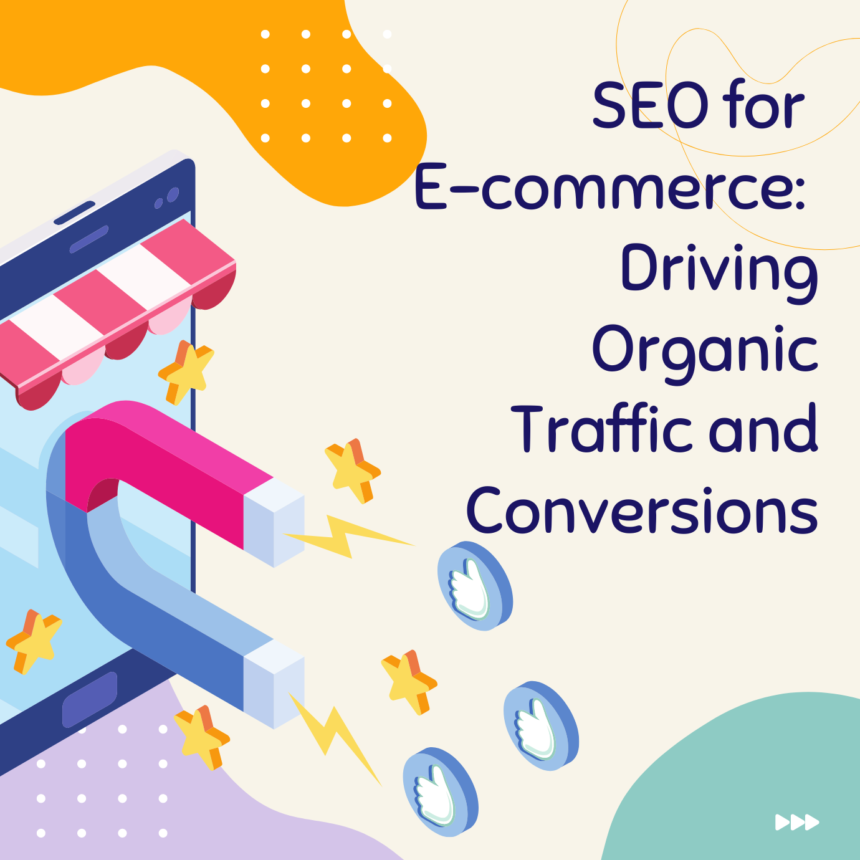In the highly competitive world of e-commerce, effective search engine optimization (SEO) is crucial for driving organic traffic and increasing conversions on your online store. By implementing SEO strategies tailored specifically for e-commerce websites, you can improve your website’s visibility, attract relevant traffic, and boost sales. Here are key SEO practices to drive organic traffic and conversions for your e-commerce site:
1. Keyword Research: Conduct thorough keyword research to identify relevant keywords with high search volume and buying intent. Focus on long-tail keywords specific to your products, categories, and target audience. Use keyword research tools, competitor analysis, and customer feedback to refine your keyword list.
2. Optimize Product Pages: Optimize individual product pages with unique and descriptive titles, meta descriptions, and URLs. Incorporate target keywords naturally into these elements. Write compelling product descriptions that highlight features, benefits, and unique selling points. Include high-quality images and videos to enhance the user experience.
3. User-Friendly Site Structure: Ensure your e-commerce site has a clear and intuitive site structure. Use logical categories, subcategories, and product filters to help users easily navigate through your store. Implement breadcrumb navigation and a search bar for quick access to products. Optimize the site structure for both users and search engines to improve indexing and crawlability.
4. Unique Content Creation: Create unique and valuable content to differentiate your e-commerce site from competitors. Develop informative and engaging blog posts, buying guides, tutorials, and product comparisons. Incorporate relevant keywords naturally into your content. Regularly update your content to keep it fresh and relevant.
5. Technical SEO Optimization: Pay attention to technical SEO aspects to ensure your e-commerce site is properly crawled and indexed. Optimize page load speed by compressing images, minimizing code, and leveraging browser caching. Implement structured data markup, such as schema.org, to enhance search engine understanding of your product information. Ensure your website is mobile-friendly and responsive across devices.
6. Build High-Quality Backlinks: Earn high-quality backlinks to your e-commerce site to increase its authority and visibility. Implement outreach strategies to acquire links from reputable websites, industry influencers, and relevant directories. Create compelling content that naturally attracts backlinks from other websites. Monitor and disavow toxic backlinks that can harm your SEO efforts.
7. User Reviews and Ratings: Encourage customers to leave reviews and ratings for your products. User-generated content, such as product reviews, adds valuable social proof and can boost search engine rankings. Implement a review system and make it easy for customers to leave feedback. Respond to reviews, both positive and negative, to demonstrate your commitment to customer satisfaction.
8. Optimize for Local SEO: If you have a physical store or serve specific geographical areas, optimize your e-commerce site for local SEO. Include location-specific keywords in your content, meta tags, and product descriptions. Create and optimize your Google My Business listing to improve local search visibility.
9. Monitor Analytics and Conversion Metrics: Use analytics tools to track and analyze website traffic, user behavior, and conversion metrics. Monitor key performance indicators (KPIs) such as organic traffic, bounce rate, average session duration, and conversion rate. Identify areas for improvement and make data-driven decisions to optimize your e-commerce site’s performance.
10. Continuous Optimization and Adaptation: SEO is an ongoing process. Continuously optimize and adapt your e-commerce SEO strategy based on market trends, customer feedback, and search engine algorithm updates. Stay informed about industry developments and emerging SEO techniques to stay ahead of the competition.
By implementing these SEO practices, you can drive organic traffic, improve search engine rankings, and increase conversions on your e-commerce website. Remember that SEO for e-commerce requires a comprehensive
approach that combines keyword optimization, technical SEO, user experience, content creation, and ongoing monitoring and optimization. Stay committed to delivering a seamless user experience, providing valuable content, and adapting your SEO strategies to align with changing consumer behaviors and search engine algorithms. With a well-executed SEO strategy, you can enhance your e-commerce website’s visibility, attract targeted organic traffic, and drive conversions.
